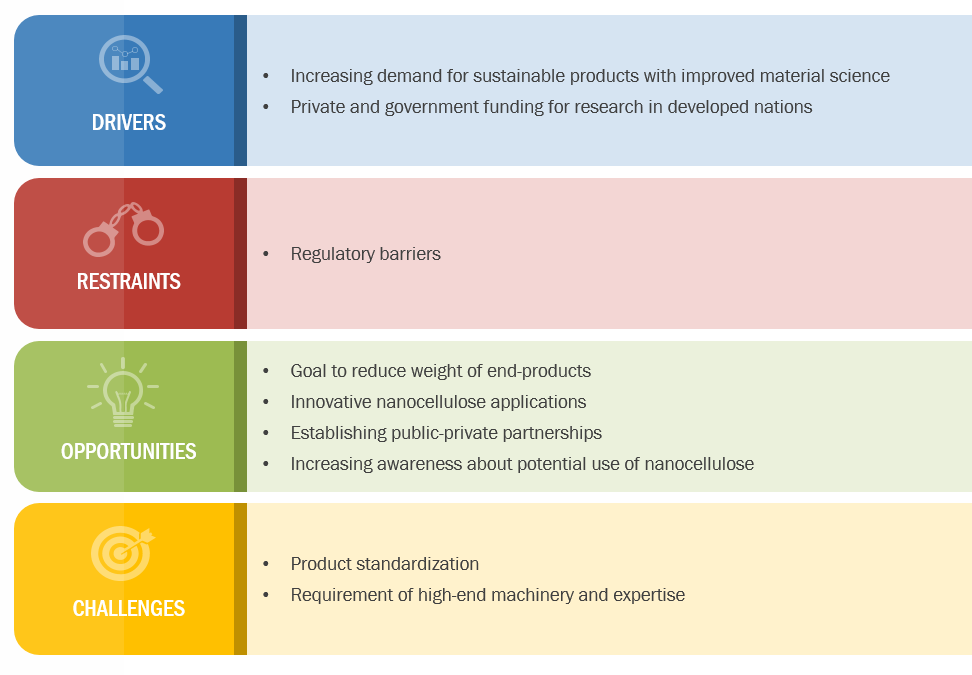Nanocellulose Quadrant Report
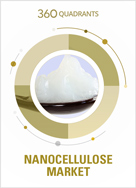
Table of Contents
1 Introduction
1.1 Market Definition
2 Market Overview
2.1 Introduction
2.2 Market Dynamics
Figure 1 Overview of Factors Impacting the Nanocellulose Market
2.2.1 Drivers
2.2.1.1 Increasing Demand for Sustainable Products With Improved Material Science
2.2.1.2 Private and Government Funding for Research in Developed Nations
2.2.2 Restraints
2.2.2.1 Regulatory Barriers
2.2.3 Opportunities
2.2.3.1 Goal to Reduce Weight of End-Products
2.2.3.2 Innovative Nanocellulose Applications
2.2.3.3 Establishing Public-Private Partnerships
2.2.3.4 Increasing Awareness About Potential Use of Nanocellulose
2.2.4 Challenges
2.2.4.1 Product Standardization
2.2.4.2 Requirement of High-End Machinery and Expertise
2.3 Value Chain Analysis
2.4 Patent Analysis
2.4.1 Overview
2.4.1.1 Methodology
Table 1 Patent Analysis
Figure 2 16.2% of All Patent Applications Granted
Figure 3 Nanocellulose Patents Publication Trend, 2014–2019
Figure 4 Patent Jurisdiction Analysis
Figure 5 Top Applicants
Table 2 Patent Applied, By Company
3 Company Evaluation Quadrant
3.1 Overview
3.1.1 Visionary Leaders
3.1.2 Innovators
3.1.3 Dynamic Differentiators
3.1.4 Emerging Companies
Figure 6 Nanocellulose Market (Global) Company Evaluation Quadrant
3.2 Strength of Product Portfolio
Figure 7 Product Portfolio Analysis of Top Players in the Global Nanocellulose Market
3.3 Business Strategy Excellence
Figure 8 Business Strategy Excellence of Top Players in the Global Nanocellulose Market
4 Competitive Landscape
4.1 Market Rank Analysis
Figure 9 FiberLean Technologies Led the Market in 2019
4.1.1 FiberLean Technologies
4.1.2 Borregard
4.1.3 Nippon Paper Industries
4.1.4 CelluForce
4.1.5 Kruger
4.2 Competitive Scenario
4.2.1 Agreements
Table 3 Agreements, 2015–2020
4.2.2 New Product Launches
Table 4 New Product Launches, 2015–2020
4.2.3 Expansions
Table 5 Expansions, 2015–2020
4.2.4 Acquisitions
Table 6 Acquisitions, 2015–2020
4.2.5 Mergers
Table 7 Mergers, 2015–2020
4.2.6 Partnerships
Table 8 Partnerships, 2015–2020
5 Company Profiles
5.1 FiberLean Technologies
5.1.1 Business Overview*
5.1.2 Products & Services Offered*
5.1.3 SWOT Analysis*
Figure 10 SWOT: FiberLean Technologies
5.1.4 Right to Win*
(*Above sections are present for all of below companies)
5.2 Borregard
Figure 11 Borregaard ASA: Company At A Glance
Figure 12 Borregaard ASA: SWOT Analysis
5.3 Nippon Paper Group
Figure 13 Nippon Paper Group: Company At A Glance
Figure 14 SWOT: Nippon Paper Group
5.4 CelluForce Inc.
Figure 15 CelluForce Inc.: SWOT Analysis
5.5 Kruger Inc.
Figure 16 SWOT: Kruger
5.6 Stora Enso
Figure 17 Stora Enso: Company At A Glance
5.7 RISE Innventia
Figure 18 RISE Innventia: Company At A Glance
5.8 American Process Inc.
5.9 FPinnovations
Figure 19 FPinnovations: Company At A Glance
5.10 UPM
Figure 20 UPM: Company At A Glance
6 Appendix
6.1 Other Significant Companies
6.1.1 Melodea
6.1.2 CelluComp
6.1.3 Blue Goose Biorefineries
6.1.4 Oji
6.1.5 VTT
6.1.6 Sappi
6.1.7 Weidmann Fiber Technology
6.1.8 Norske Skog
6.1.9 Weidmann
6.1.10 InoFib
6.2 Methodology
This report identifies and benchmarks the key market players such as FiberLean Technologies, Borregard, Nippon Paper Industries, Celluforce, Kruger, and evaluates them on the basis of business strategy excellence and strength of product portfolio within the nanocellulose ecosystem, combining inputs from various industry experts, buyers, and vendors, and extensive secondary research including annual reports, company press releases, investor presentations, free and paid company databases. They are rated and positioned on a 2x2 matrix, called as ‘Company Evaluation Quadrant,’ and identified as Visionary Leaders, Dynamic Differentiators, Innovators, or Emerging companies.
SAMPLES:
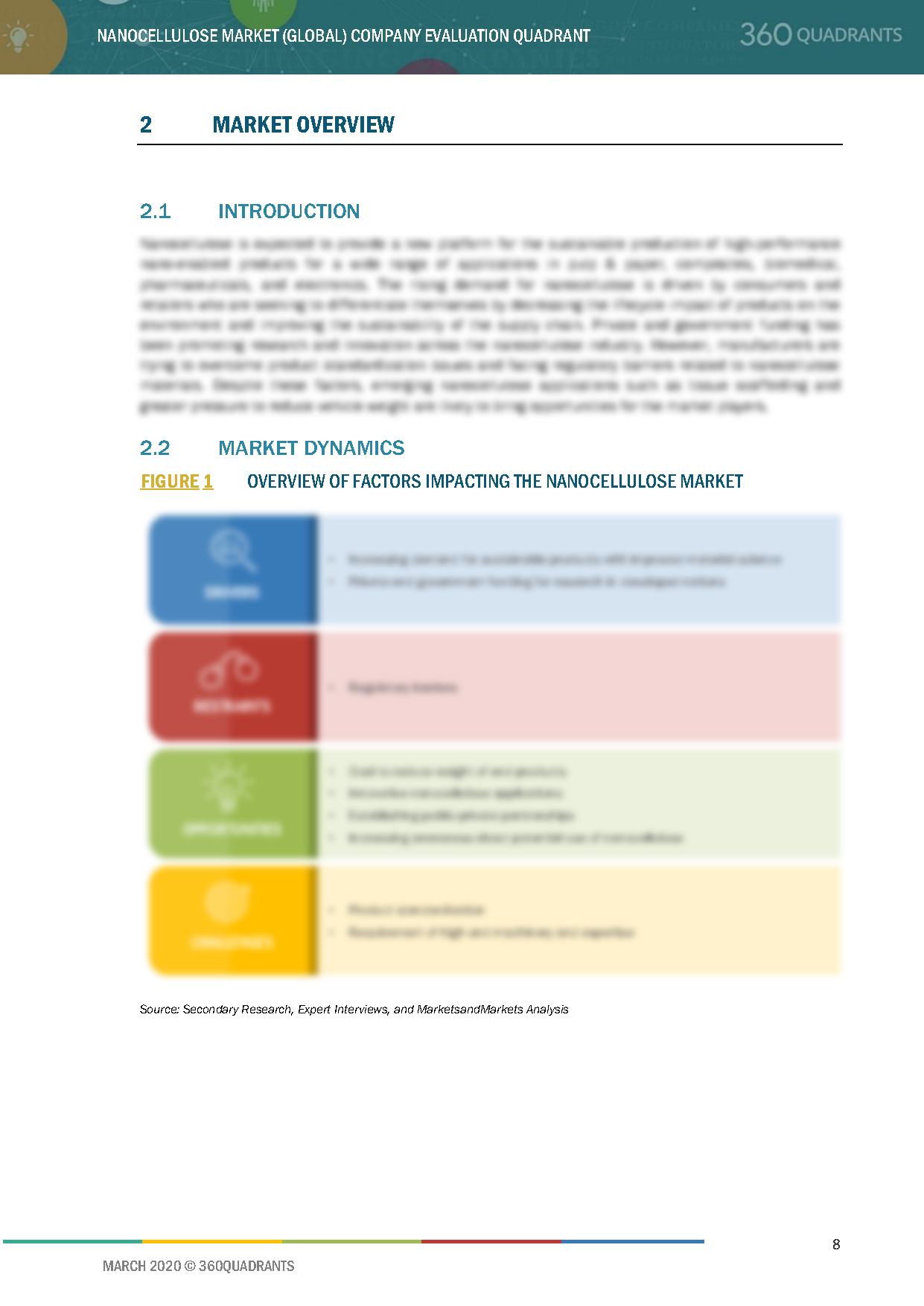
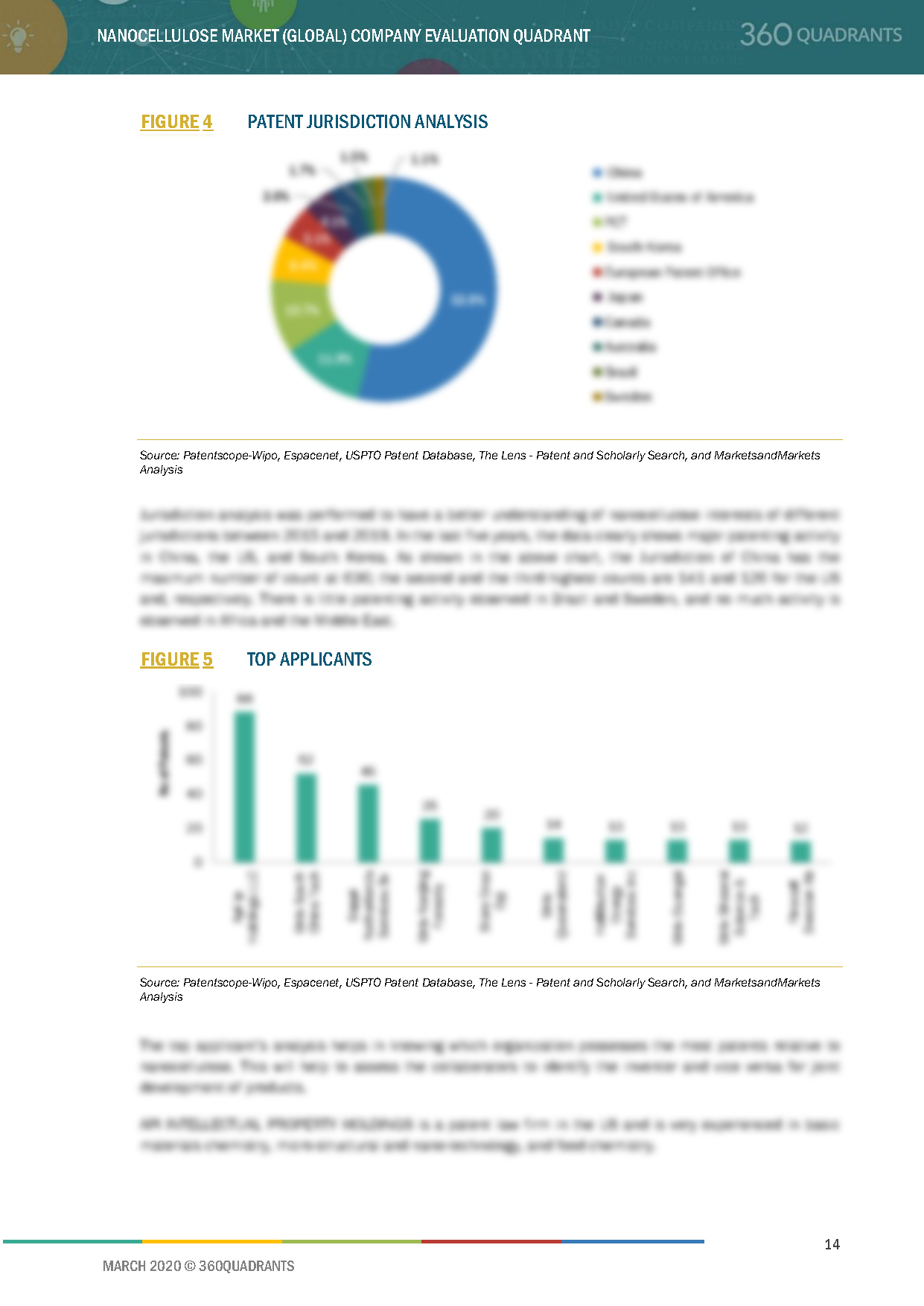
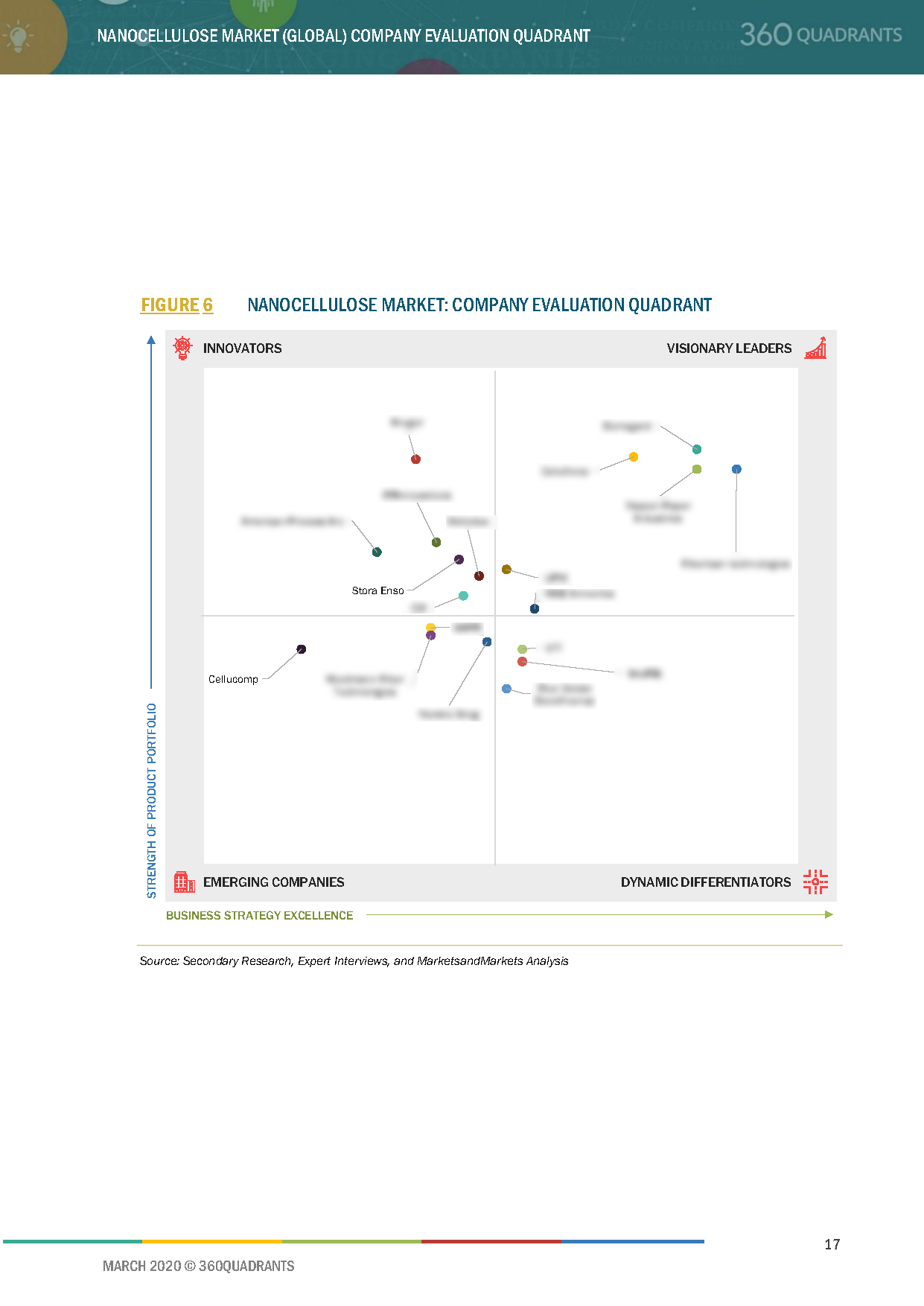
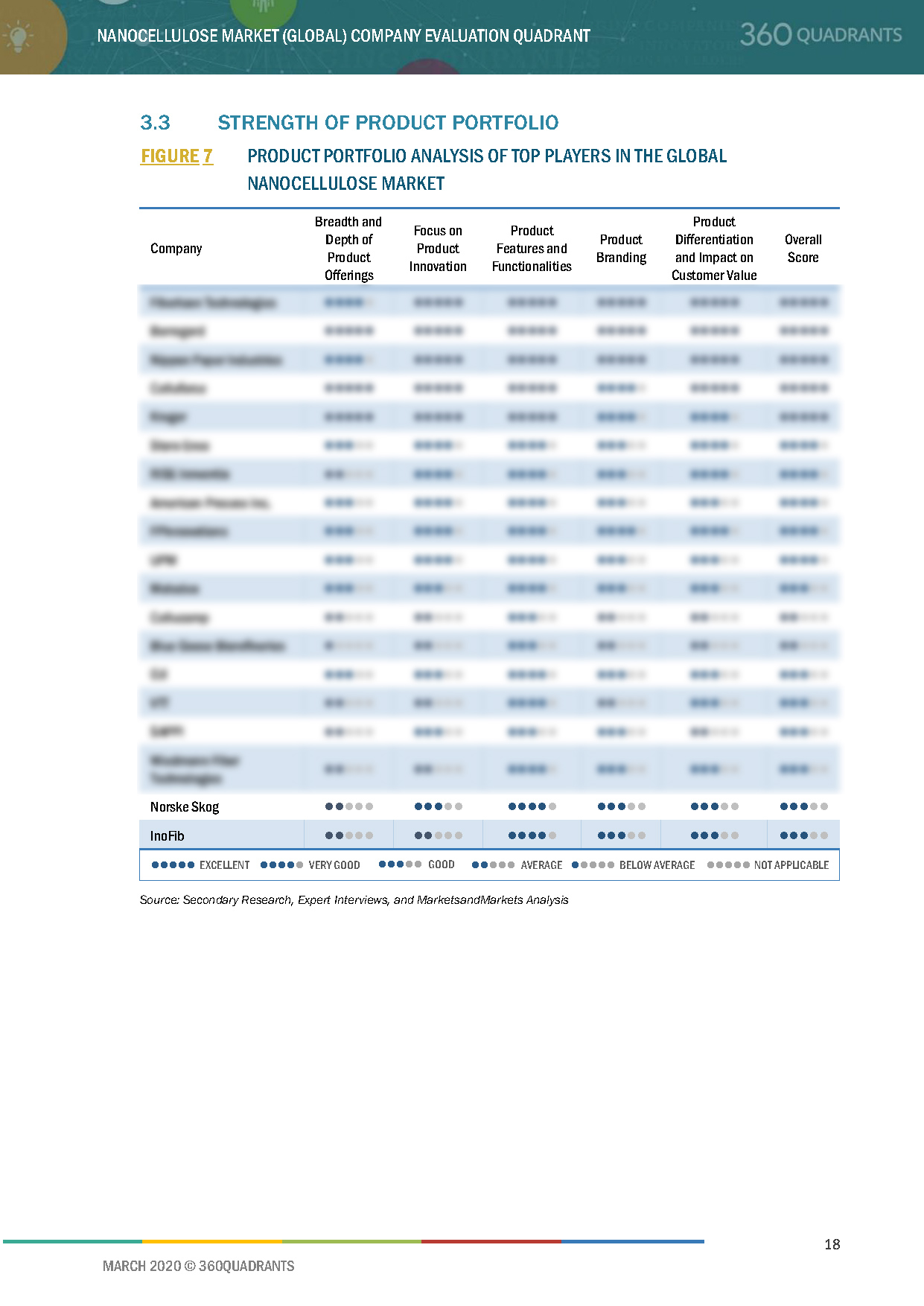
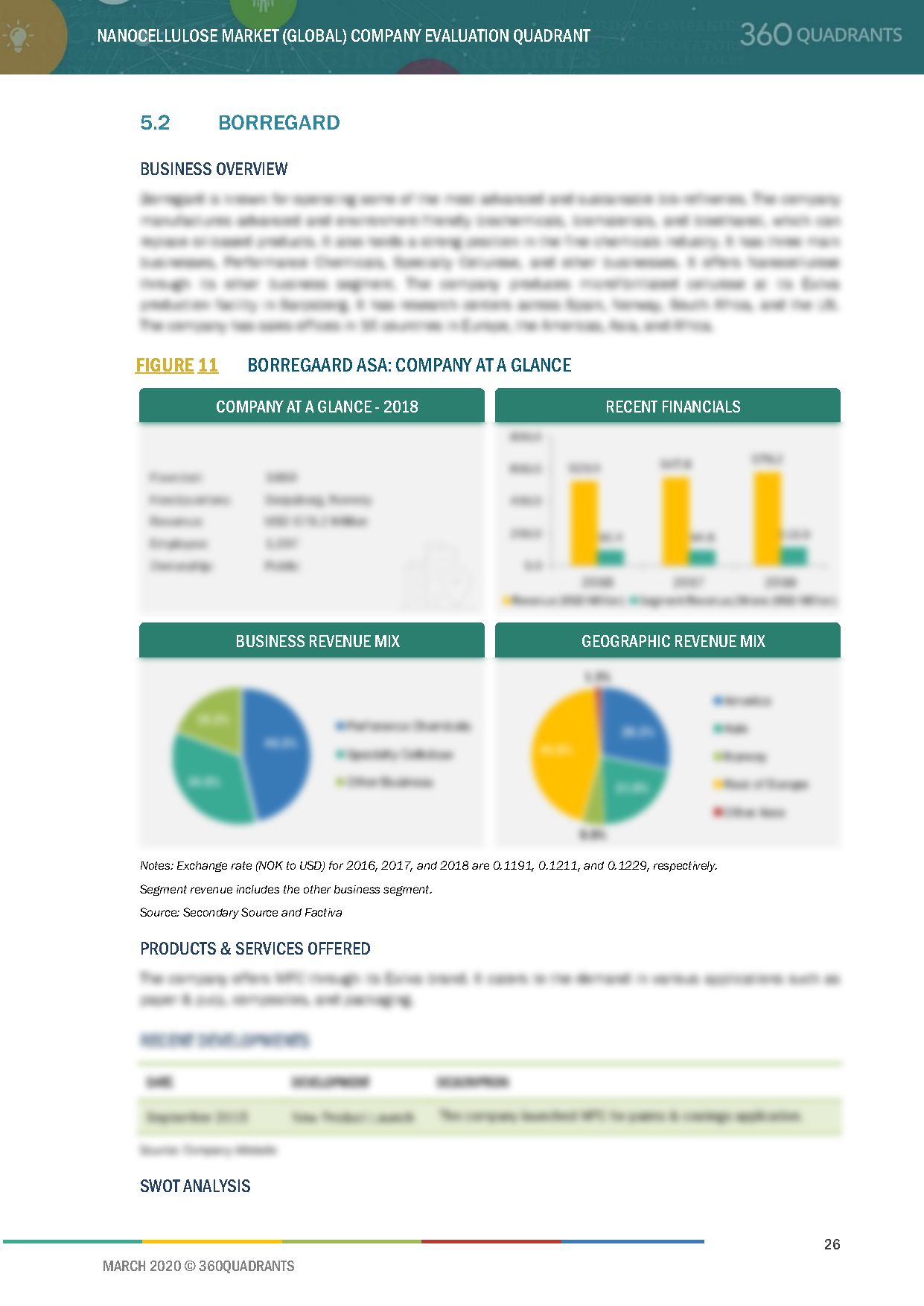
- Updated version of this Quadrant
- Different Company Evaluation Quadrant
- 'Startup Only' Company Evaluation Quadrant
- Region or Country specific evaluation
- Application or Industry specific evaluation ..Read More
- Submit a Briefing Request
- Question about our published research
- Request for evaluation of your organization for specific market
- Request for re-evaluation of Company Evaluation Quadrant ..Read More
